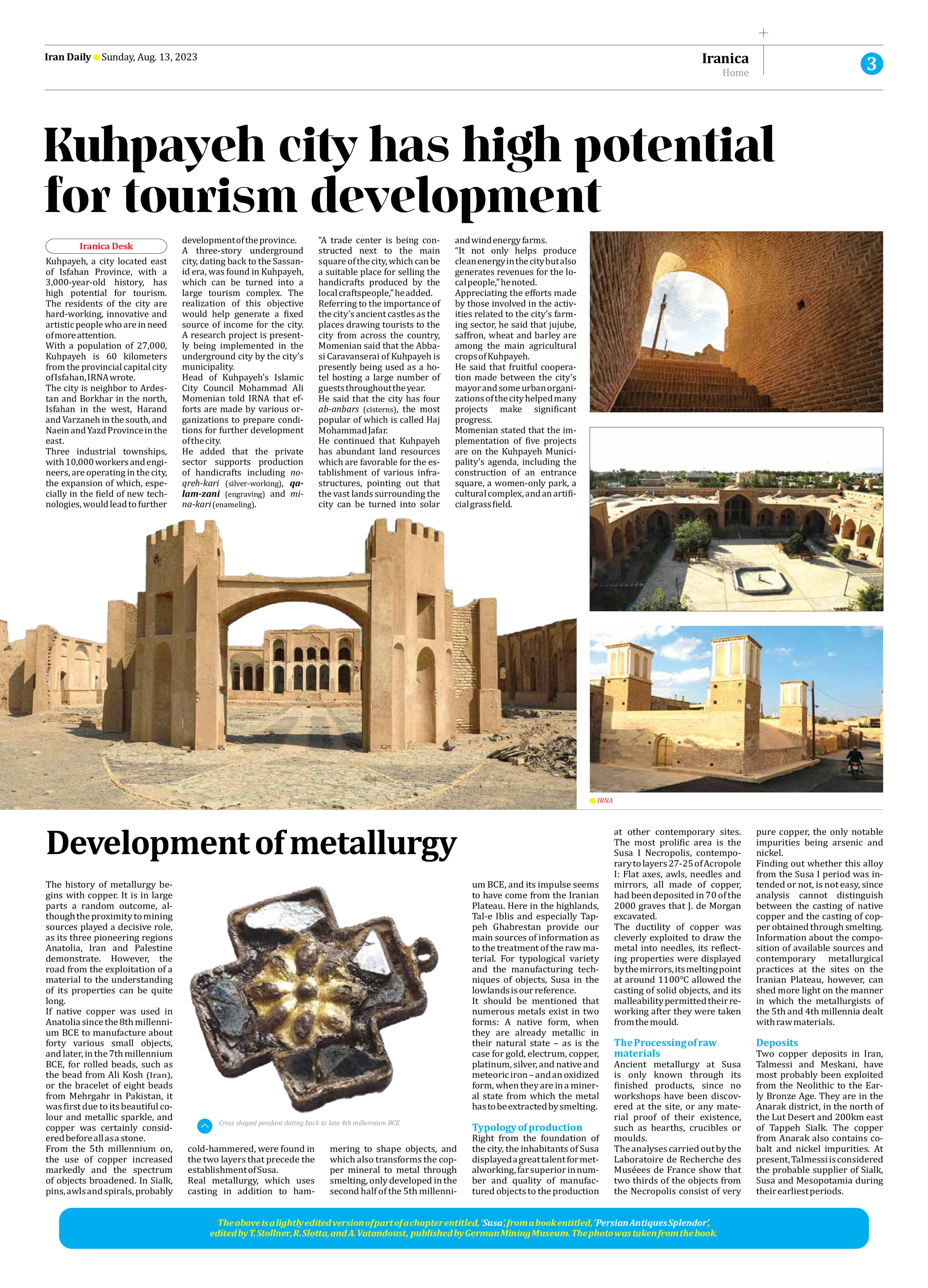
Kuhpayeh city has high potential for tourism development
Kuhpayeh, a city located east of Isfahan Province, with a 3,000-year-old history, has high potential for tourism. The residents of the city are hard-working, innovative and artistic people who are in need of more attention.
With a population of 27,000, Kuhpayeh is 60 kilometers from the provincial capital city of Isfahan, IRNA wrote.
The city is neighbor to Ardestan and Borkhar in the north, Isfahan in the west, Harand and Varzaneh in the south, and Naein and Yazd Province in the east.
Three industrial townships, with 10,000 workers and engineers, are operating in the city, the expansion of which, especially in the field of new technologies, would lead to further development of the province.
A three-story underground city, dating back to the Sassanid era, was found in Kuhpayeh, which can be turned into a large tourism complex. The realization of this objective would help generate a fixed source of income for the city. A research project is presently being implemented in the underground city by the city’s municipality.
Head of Kuhpayeh’s Islamic City Council Mohammad Ali Momenian told IRNA that efforts are made by various organizations to prepare conditions for further development of the city.
He added that the private sector supports production of handicrafts including noqreh-kari (silver-working), qalam-zani (engraving) and mina-kari (enameling).
“A trade center is being constructed next to the main square of the city, which can be a suitable place for selling the handicrafts produced by the local craftspeople,” he added.
Referring to the importance of the city’s ancient castles as the places drawing tourists to the city from across the country, Momenian said that the Abbasi Caravanserai of Kuhpayeh is presently being used as a hotel hosting a large number of guests throughout the year.
He said that the city has four ab-anbars (cisterns), the most popular of which is called Haj Mohammad Jafar.
He continued that Kuhpayeh has abundant land resources which are favorable for the establishment of various infrastructures, pointing out that the vast lands surrounding the city can be turned into solar and wind energy farms.
“It not only helps produce clean energy in the city but also generates revenues for the local people,” he noted.
Appreciating the efforts made by those involved in the activities related to the city’s farming sector, he said that jujube, saffron, wheat and barley are among the main agricultural crops of Kuhpayeh.
He said that fruitful cooperation made between the city’s mayor and some urban organizations of the city helped many projects make significant progress.
Momenian stated that the implementation of five projects are on the Kuhpayeh Municipality’s agenda, including the construction of an entrance square, a women-only park, a cultural complex, and an artificial grass field.







